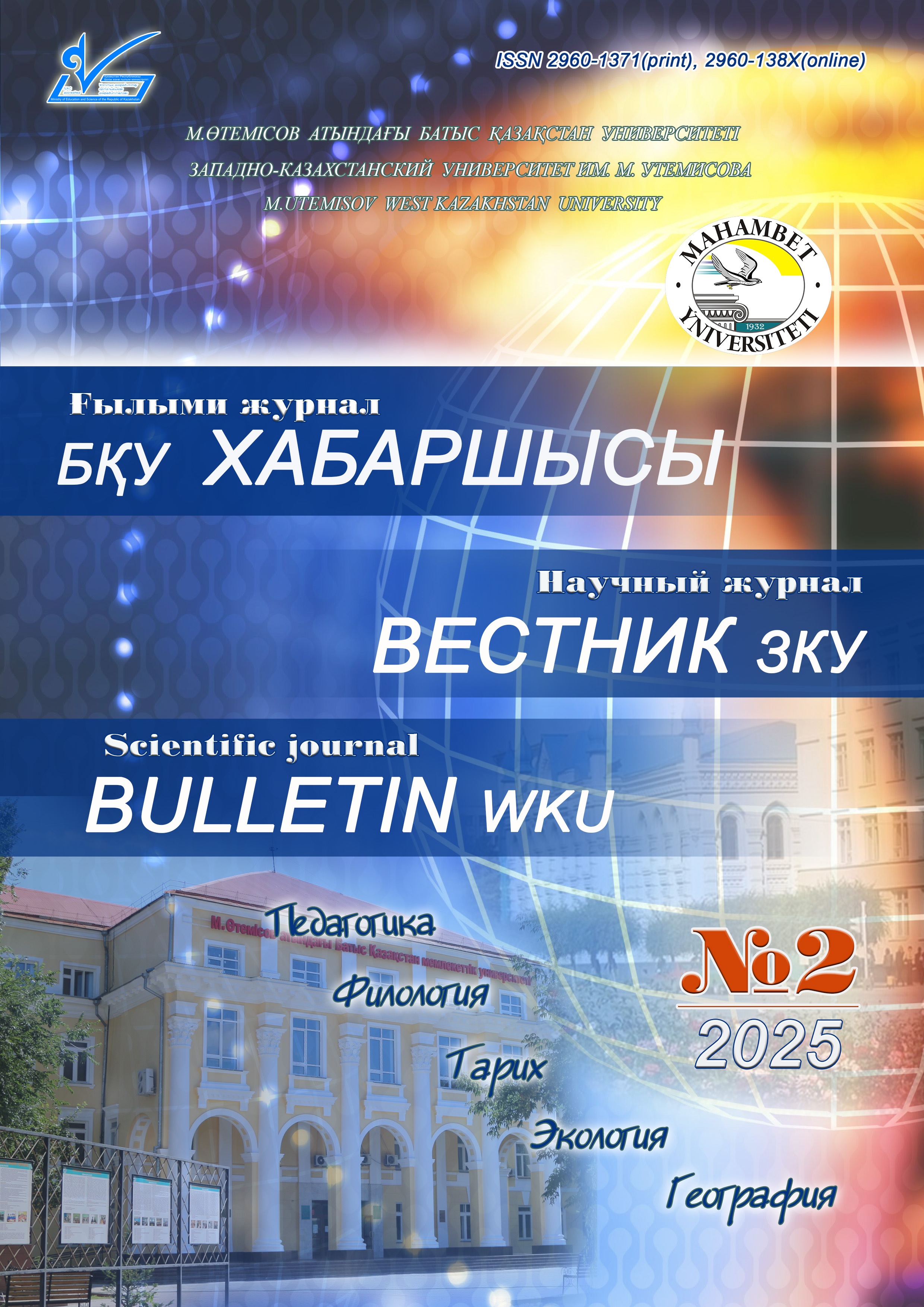INFLUENCE OF BORDER FORTIFICATIONS CONSTRUCTION IN THE XVIII CENTURY ON THE TOPONYMY OF THE MIDDLE PRIIRTYSH REGION
Abstract
The toponymy of the modern territory of the Middle Priirtyshye has a centuries-old history and reflects the main stages of development of the region, within which, in the course of these or those historical events, the layers of vocabulary of representatives of different language groups mixed and interacted, which was reflected in the names of rivers, mountains, lakes, settlements, etc. The purpose of this study is to examine some features of the formation and development of the toponymy of the Middle Priirtyshye associated with the construction of border fortified lines in the region in the XVIII century. This system of defensive constructions, organised on the initiative of the Russian Empire government, not only had strategic importance for the control over the Kazakh steppes and their colonisation, but also had a great influence on the transformation of the spatial structure of the region, reflected in its toponymy and having predominantly Slavic basis. Specific examples trace the emergence and functioning of Russian toponyms associated with the names of fortresses and lighthouses, some of which continue to exist today in the form of urban and rural settlements. The study reveals that many of the names of fortified points, which appeared at that time, were transferred from the old place of residence by people moving here or were derived from them; some of them were associated with the features of nearby water bodies. These names became an important element of the cultural landscape of the region, symbolising the historical link between the spatial development of the territory and multinational interaction in the process of its integration into the Russian Empire.



